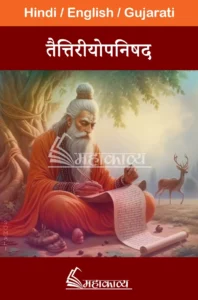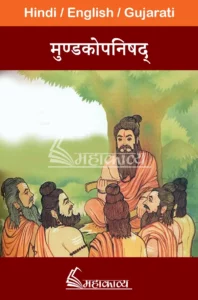Mundaka Upanishad in English
Among the Upanishads, the Mundaka Upanishad (Mundaka Upanishad in English) is regarded as one the most important. It throws a flood of light on the Jnana Marga (the path of Knowledge) and leads the aspirant to the highest rung in the ladder of Jnana— Brahmavid Brahmaiva Bhavati.
Read here in one click ~ Mundkopanishad in Hindi
That this Upanishad was meant for the Sannyasin (and hence the significant name Mundaka Upanishad) is itself the highest tribute that can be paid to its sacredness. The truth that this Supreme Knowledge which the Upanishad imparts is to be had through inspirational initiation direct from a Guru who is well versed in the Brahma Vidya and who has at the same time had the Brahma Anubhava, is brought out very clearly in this Upanishad.
Mundakopanishad (Mundaka Upanishad in English) is an Indian Upanishad, which is one of the important texts of Vedanta philosophy. Its commentary has been written by Adi Shankaracharya, in which important principles of Vedanta philosophy have been discussed in detail. The main goal of this Upanishad is to attain self-knowledge and Brahmagyan.
Mundakopanishad is included in the mantra part of Atharvaveda. There are three Mundakas in this Upanishad and one Mundaka has two sections. At the beginning of this book, the Acharya tradition of Granthokta Vidya has been given. Where it is said that this knowledge was received by Atharva from Brahmaji and from Atharva it was received by Maharishi Angira through Maharishi Angi and Bhardwaj Rishi respectively.
By modifying elements considered through Mundakopanishad, a person identifies his soul and experiences unique Brahmagyan. Lord Brahma has been discussed significantly in this Upanishad. Mundakopanishad is one of the major texts of Panchal Vedanta of Maharishi Vedavyasa along with Bhagavad Gita and Brahma Sutra and this Upanishad shows that true knowledge and realization of soul should be the main goal of life.
Main topics of Mundakopanishad:
Brahmagyan: In this Upanishad, the nature, characteristics of Brahma, and its relationship with the soul are described in detail. This Upanishad explains the importance of Brahmagyan and promotes the soul’s attainment of a unique voice by connecting with the Supreme Soul.
Dwidha Vidya: Mundakopanishad describes Dwidha Vidya – Para Vidya and Apara Vidya. Para Vidya leads to Brahmagyan, while Apara Vidya leads to the study of Vedas and the attainment of worldly happiness through Yagyas.
Adi Shankaracharya’s Commentaries: Adi Shankaracharya’s commentary on the verses of Mundakopanishad is extremely important, as it helps in understanding the deeper meanings of the Upanishad and clarifies various issues of Vedanta.
Significance: Mundaka Upanishad plays an important role in Vedanta philosophy and the spiritual quest for self-realization. It is often studied in conjunction with other Upanishads, the Bhagavad Gita, and the Brahma Sutras to gain a comprehensive understanding of Vedanta.
The Mundakopanishad is an important text in the Advaita Vedanta tradition and has been studied and respected by scholars and spiritual seekers for centuries. Mundakopanishad is an important text for spiritual knowledge and practice and it guides the soul towards spiritual study, meditation, and salvation.






 Download the Mahakavya App
Download the Mahakavya App